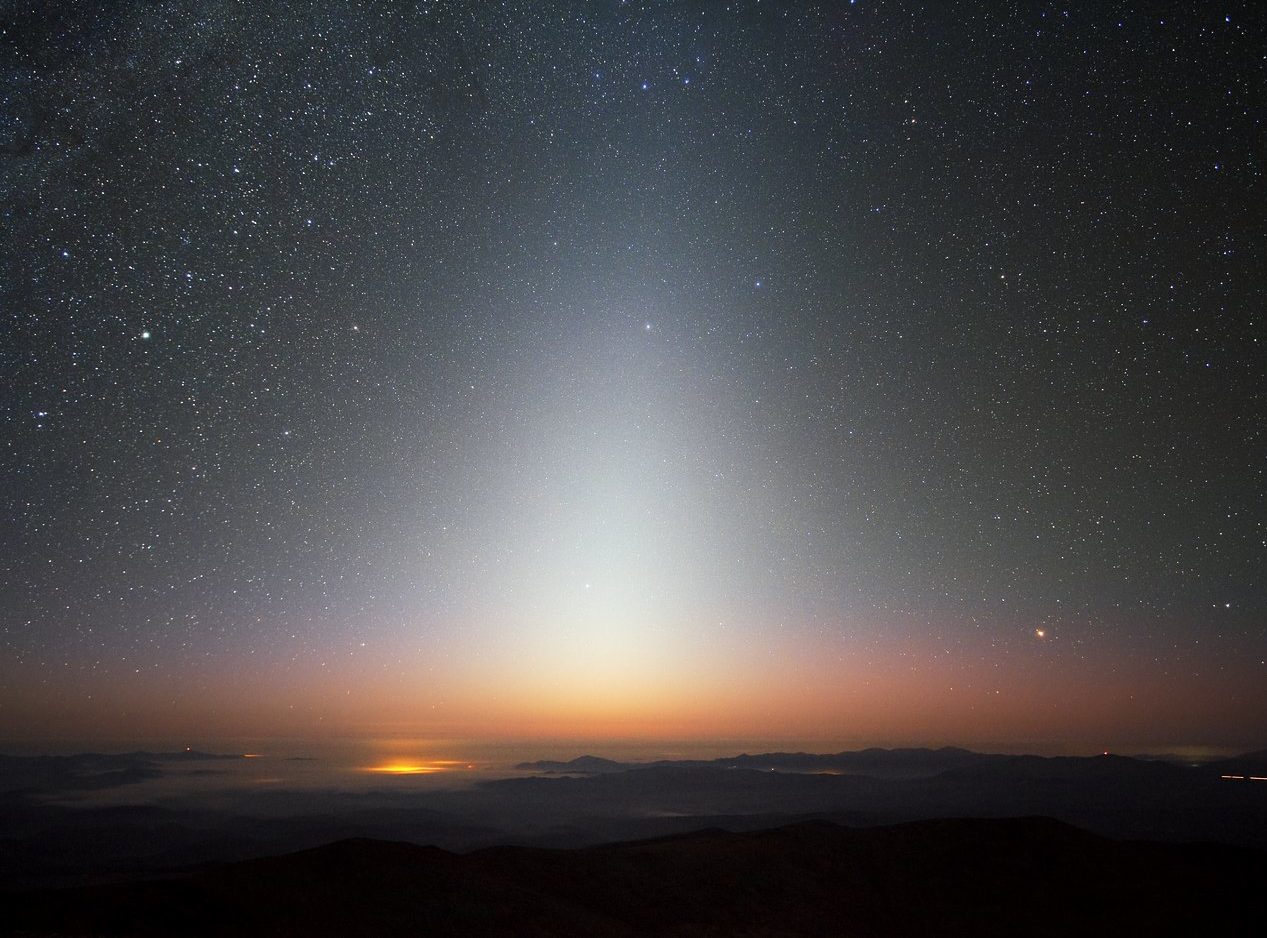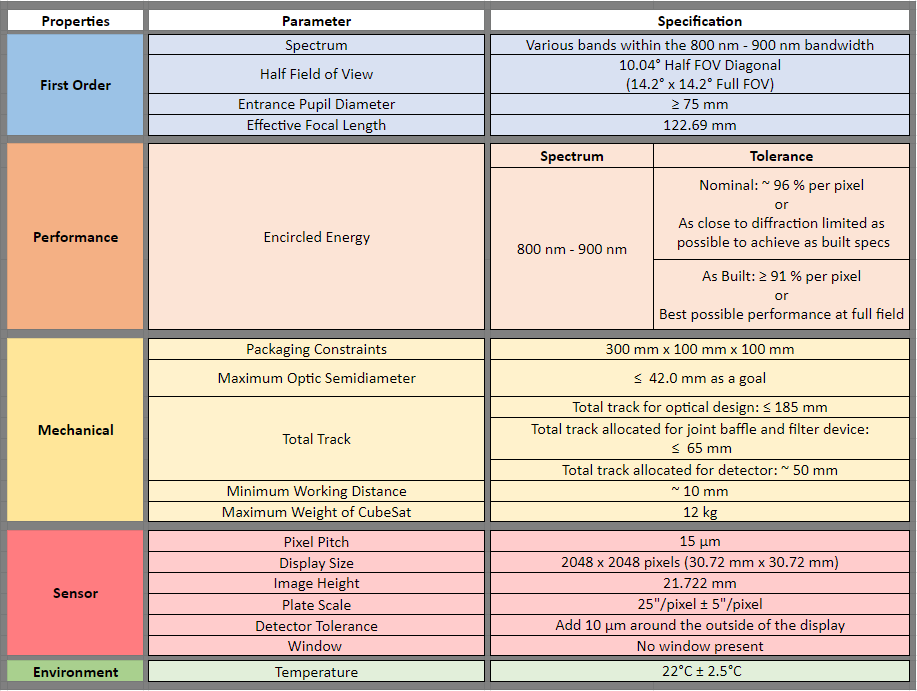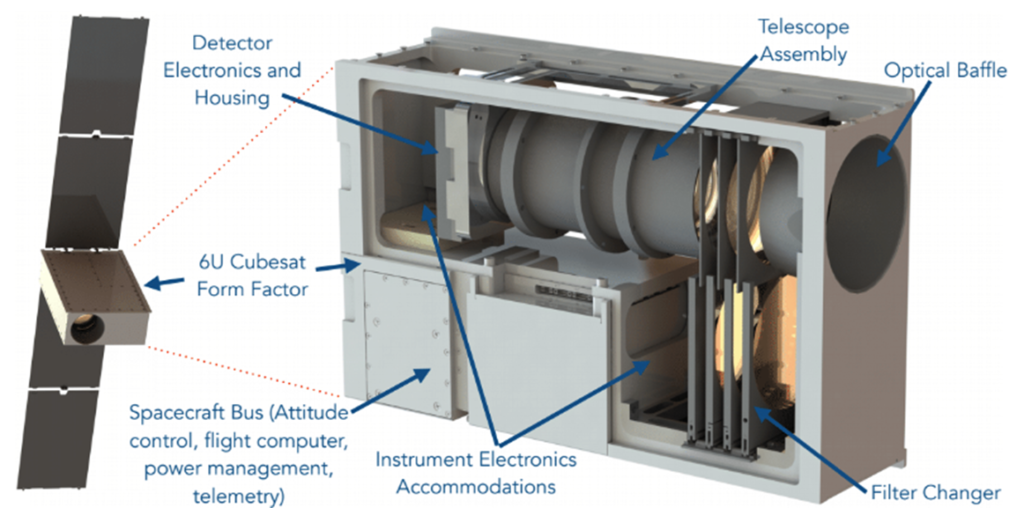
ZODIAC CubeSat Optical Design
Image Reference: European Southern Observatory, (2014). Zodiacal Light Over La Silla, ESO
Our Team

Alexander Wansha

Owen Lynch

Will Eisold
Vision
We joined a team of scientists and engineers from across the nation led by our customer Dr. Michael Zemcov. The team’s objective was to submit a proposal to the 2022 NASA ROSES initiative. The proposal was centered around using a 6U CubeSat to study Zodiacal light. This phenomenon is caused by light scattered from interplanetary dust. Our group was tasked with designing the optical subsystem included in the final proposal.
Background
The goal of this system, is to accurately observe and analyze the spectral signatures of particles that cause Zodiacal light. This information can help astronomers understand our own solar system, as well as what to expect when looking into exoplanetary systems. This will be done by utilizing an etalon filter and several bandpass filters placed in front of our optical system to take spectrometric measurements.
A previous satellite mission by our customer proved the scientific methodology of this research. The goal was to take that mission’s optical system and redesign it for a new set of specifications derived from their previous research. However, after a preliminary analysis, the initial design’s field of view, waveband, and large size were too different from our new goals to act as an adequate starting point. Ultimately, we were forced to branch into novel design spaces to fit our various constraints. This led to our final design seen below.
We were also tasked with procuring estimates from vendors, performing ghost analysis, and working with a senior design team from RIT on a filter changer and baffle.
Specifications

Design
After several iterations of specification changes and design progress, the following design was completed to meet our goals. Based on the F/# and field of view (FOV) of our system, we started with a five element petzval projection lens. We utilized various design techniques to modify this starting point to meet our specifications while maintaining high performance, but found the design form needed drastic changes to do so. This fact, along with a front aperture stop and tight packaging constraints, forced us to branch into novel design spaces and find custom design forms. After comparing several design iterations, we agreed upon the following design which met our goals after initial tolerance analysis.


Tolerances/Monte Carlo Simulation
A key aspect of this project was to show NASA that there is a manufacturable optical design that can meet the team’s science goals without going over budget. The largest driver of the manufacturability, as-built performance, and cost will be based on the tolerances of our system. We talked with various optical system vendors to discuss their tolerancing capabilities and applied these values to our models. From here, we could perform Monte Carlo Analyses by randomly perturbing each individual dimension (thicknesses, lens curvatures, etc.) and evaluate the “as-built” performance of a dataset of 500 systems. An example probability distribution plot output from Code V based on ensquared energy can be seen below.

To collect more informative data, the team created a custom piece of code to analyze the 500 trials. This code reported values relating to compensator movement, performance metrics, and trial specific data. This information was used to convey system to system performance with the customer and vendors. This visualization aided in collecting more precise estimates and guiding future work.

CubeSat Layout
The final proposal included the following diagram showing our telescope assembly integrated into the overall CubeSat.

Conclusion
We developed an optical subsystem to analyze Zodiacal light as part of a NASA ROSES CubeSat proposal. This included designing a buildable optical device, procuring quotes for the overall subsystem, and collaborating on system integration. Our work led to a proposal that was submitted on March 17th, 2022.
Customer
Dr. Michael Zemcov
Faculty Advisors
Dr. Julie Bentley
Adam Briggs
Senior Design Professor
Dr. Wayne H. Knox
Acknowledgements
We would like to thank our advisors Julie Bentley and Adam Briggs. Their guidance and support was invaluable. We would like to give additional thanks to Dr. Jessica DeGroote Nelson and Dr. Jennifer D. T. Kruschwitz for their additional help.
